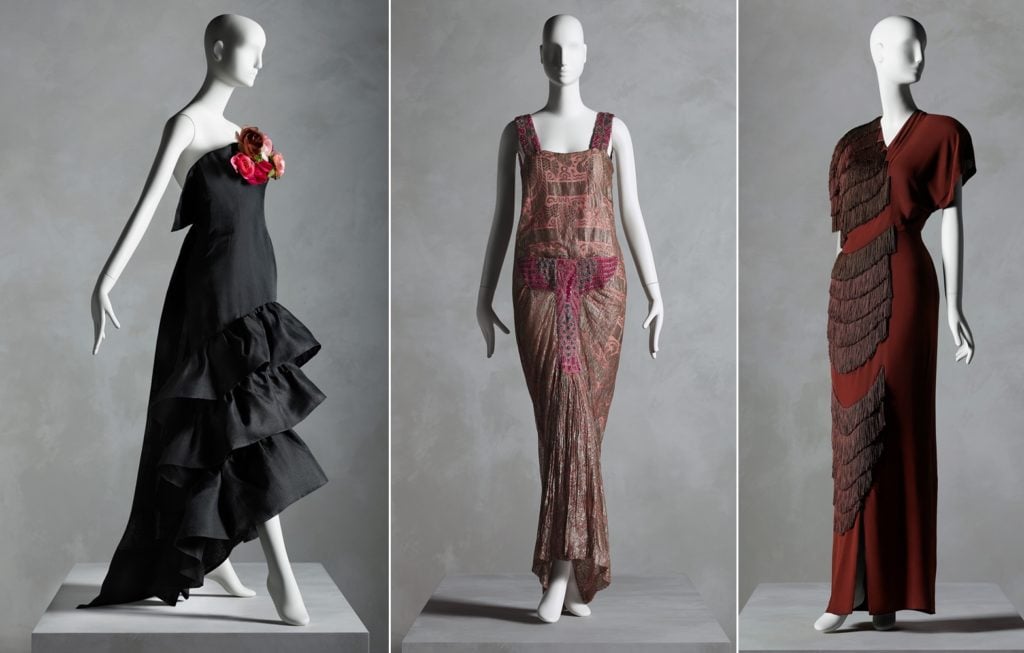This November, the Met’s Costume Institute will display one of the greatest collections of 20th-century fashion you’ve never heard of.
“In Pursuit of Fashion: The Sandy Schreier Collection” will showcase 80 of the 150 pieces that Schreier, a fashion historian and couture collector, is donating to the museum, on view from November 27, 2019, to May 17, 2020.
The Detroit native, now in her 80s, owns more than 15,000 items of couture clothing, all immaculately preserved and, importantly, never worn by Schreier herself. “If I owned a Picasso, it would not be on my back,” she told the New York Times. A self-described “fashion savior,” Schreier says that every piece in her collection is an object of beauty and design history and, though she hasn’t worn the treasures herself, many have appeared on the backs of others. She owns dresses worn by Twiggy, Matilda Dodge Wilson (the wife of a Dodge car company founder), and actress Rita Hayworth.

Sandy Schreier with her late husband Sherman in Miami, Florida. Photo: Patrick McMullan / Getty Images.
Schreier began amassing her collection from a young age, sitting alongside her father, then the assistant manager of the newly opened department store Russeks in Detroit, then the epicenter of American wealth, and quickly fell in love with the luxurious clothing worn by his clientele.
Since then, Schreier has become one of the most celebrated private collectors of haute couture in the world. She has written two books on the history of fashion in Hollywood, and has also worked as a costume designer for the Supremes, and an accessories designer for Yves Saint Laurent, in addition to curating costume exhibitions around the world.
“There was no doubt in mind the Met has the best staff to take care of all my babies when they are away at permanent summer camp, and the broadest, best audience for them,” Schreier told the Times of her decision to make the donation, which comes as part of the Met’s 2020 Collections Initiative to celebrate the museum’s 150th anniversary. “I very much did not want them to end up at auction sold to some socialite who would buy them, and alter them to wear once to a party, and then get rid of them.”










